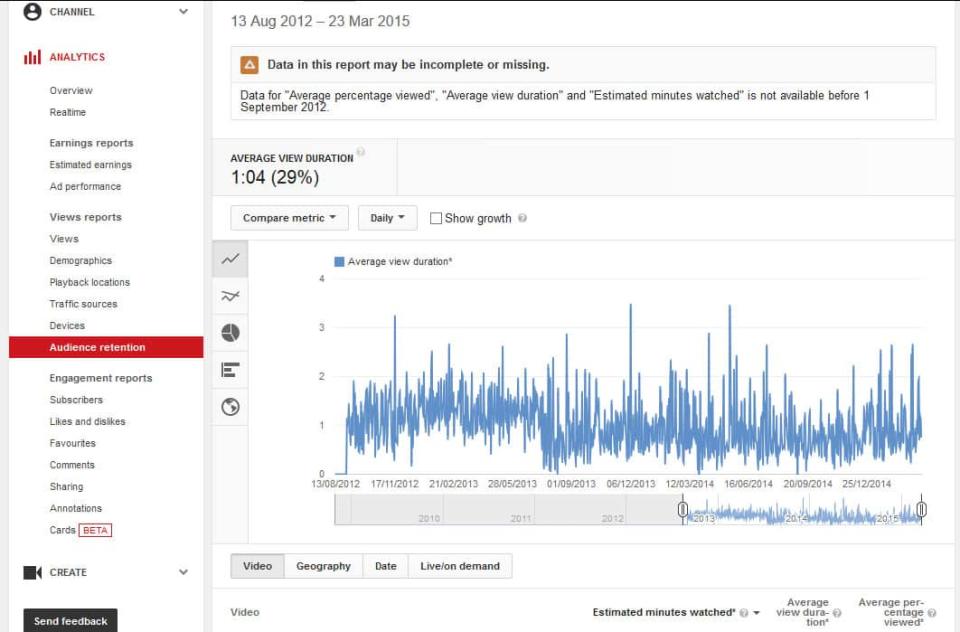YouTube Marketing Strategy: Views vs. Subscribers
YouTube Marketing Strategy: Views vs. Subscribers
YouTube is arguably one of the top websites in the world, just behind Google and Facebook. Latest figures show that it has over 800 million unique visitors each month. A more mind-boggling fact is that there are nearly 4 billion videos viewed on YouTube in a single day. Simply put, YouTube is one of the best platforms for online marketers wishing to promote a brand, product, or service to potential customers.
For most online marketers, using the concept of social proof is one of the best ways to convince customers to buy a particular product, or avail a certain service. Social proof is a psychological concept that says people will perform a certain action because others are doing it.
This explains why a customer would likely step into a popular restaurant that one which is practically empty. It's also a potential reason why a customer would buy a certain product that has been tested and recommended by a friend.
A lot of studies back up this claim. One study of research shows that seven out of 10 American consumers will look at product reviews first before making a purchase. Another consumer study reveals that six out of 10 American consumers will buy from an online store if its products have positive ratings and reviews.
Using social proof in online marketing is very useful for small companies, because it allows them to compete head-on against their larger competitors despite having limited advertising budget.
And YouTube is one of those channels that online marketers can tap to generate and share social proof content for their respective brands.
How to Influence Potential Customers Through YouTube
There are several key areas that online marketers can focus on to influence YouTube viewers using the concept of social proof, including:
Getting more YouTube views
One of the first things that YouTube viewers will notice about a certain YouTube video is the number of views it has. When a YouTube video has, say, a million views, it is often perceived as popular and thus something worth watching.
Most of the time, the number of views is all that it needs for a casual YouTube viewer to watch a video. The topic or subject of the video doesn't even have to be of particular interest to the casual YouTube viewer for him or her to watch it. The YouTube user will be swayed into watching a viral video because, well, it's popular.
Take for instance, the video of Korean artist Psy for his song "Gangnam Style." The music video is the most watched ever on YouTube with more than 2.6 billion views. But come to think of it, how many of those viewers were really interested in the song? It's safe to assume that more than half of the viewers didn't even understand what Psy was singing, but they still watched the video because it was that popular.
Thus, online marketers have to come up with videos that are engaging not just to its target viewers, but to the general YouTube audience as well. Usually, YouTube videos that are entertaining, humorous, engaging, and tell a compelling story are the ones that go viral.

Getting more YouTube subscribers
Aside from getting more views for their YouTube videos, online marketers try to get as many YouTube subscribers for their YouTube channels. The number of subscribers that a YouTube channel has can influence other people's perception of it. The large number of subscribers that a YouTube channel has serves as its social proof. It reflects the popularity of the videos from the said channel, and can convince other YouTube users to subscribe to the said channel. In turn, the brand will benefit from the increase in YouTube subscribers as this also spikes traffic on all videos.
Getting YouTube to recommend videos
Finally, online marketers aim to make the videos for the clients recommended or suggested by YouTube itself. Most of the time, organic viewership on YouTube comes from the "Suggested Videos" column. YouTube viewers are more likely to watch a video after clicking the "Up Next" tab or button.
There are many tricks that online marketers do in order for YouTube to "recommend" their videos. One is by making videos that engage viewers from start to finish. Watch time is important for YouTube, thus video tutorials that viewers aren't likely to skip are more often recommended by the popular website.
For a YouTube video to be recommended, it should also encourage viewer engagement. This can be determined by the number of likes, dislikes, and comments of the video. Viewer engagement can also be achieved by the brand asking its YouTube subscribers what they liked about a video, or anything else they'd like to view on the channel. Other administrators of YouTube channels even ask their subscribers to share the video on their Facebook or Twitter accounts.
Different Tactics to Increase Viewer Engagement
Aside from the aforementioned tactics, there are other ways for online marketers do to increase viewer engagement on YouTube:
Adding closed captions
Writing keyword-optimized description, title, and tags
Publishing videos regularly
Embedding videos on a brand's website
Creating an interesting and engaging trailer
Call to action (CTA) messages at the end of the video clip
Limiting the video length to 5 minutes or less. YouTube viewers aren't likely to spend five minutes on a YouTube video, unless they are very much interested on the topic.
Conclusion
YouTube's popularity around the world is undeniable. Its global reach makes it one of the best sites for online marketers to promote a brand by creating engaging videos. Online marketers aim to boost the views of their YouTube clips and increase the number of subscribers of their YouTube channels. These strategies can directly improve traffic to their websites and in turn, boost their brand's sales.
